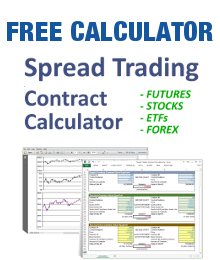You can often get the best of both worlds by buying or developing an add-in toolkit and combining it with custom formulas and VBA. This allows you to focus on the parts of your model that are specific to your needs while gaining efficiency and functionality in those parts which are more generic.
As the number and complexity of desired functions increases, it is often best to modularize your trading model into clearly defined components that work together in sympony. These components may be separate Excel workbooks that link together, an Excel workbook plus a database, an Excel portfolio management model feeding to and from a dedicated execution system such as TradeStation or Interactive Brokers’ Trader Workstation, a DDE-based Excel data managment worksheet plus a separate signal calculation worksheet in the same workbook, or even a free web data source such as Yahoo!Finance combined with web calls from an Excel trading model.
Different model architectures such as these imply a need to modularize the model rules and workflow logic into smaller, more manageable, and more specialized components that can act independently yet interact collaboratively into a complete trading system.





